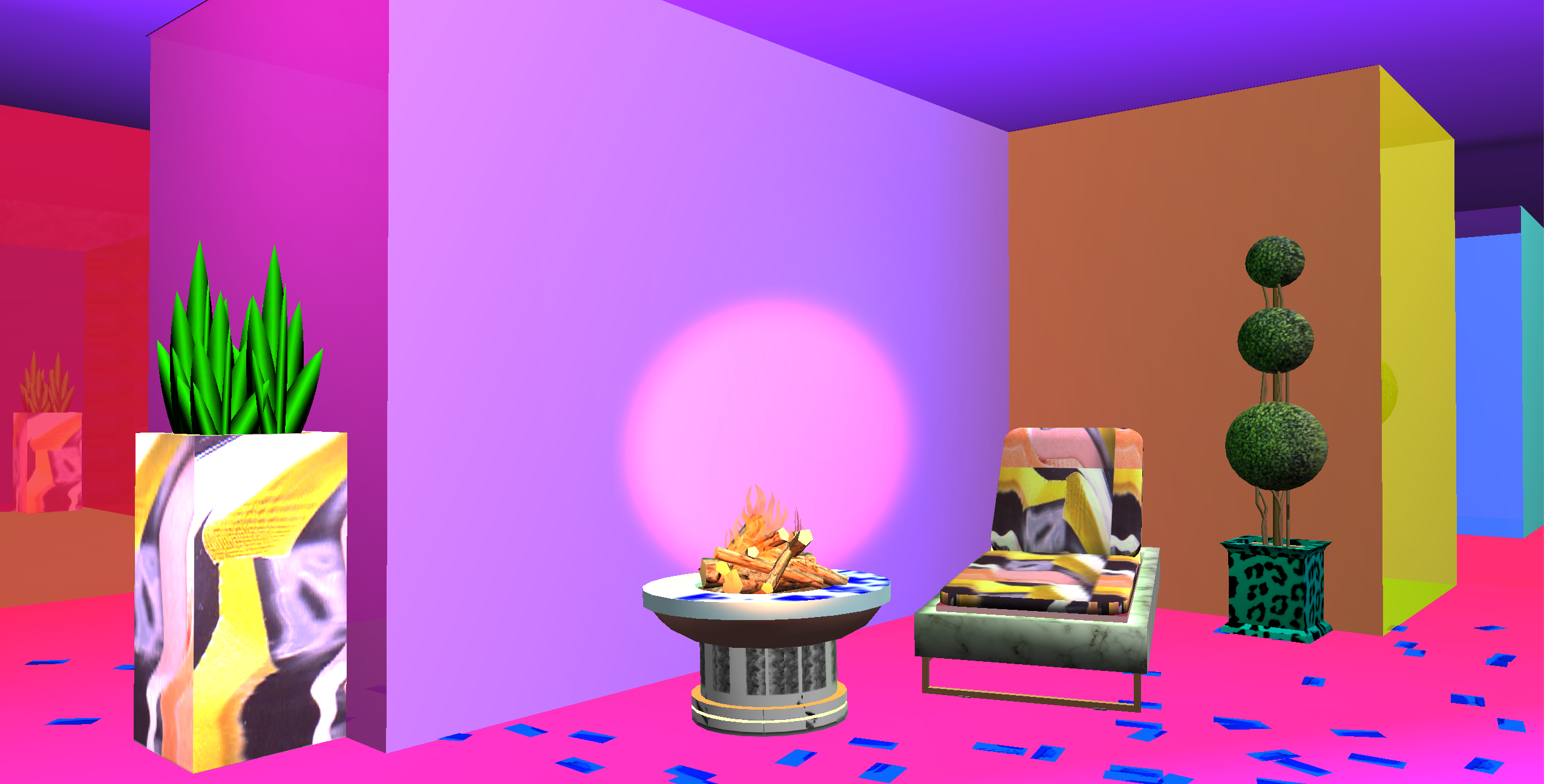If she could, I’m pretty sure net artist and first-time videogame creator Cassie McQuater would throw her body into a shredder over and over again, until she was nothing more than a flesh-colored gloop with a grin. The only setback is her own mortality, but her artwork doesn’t have that excuse, which is why she enjoys recycling it “over and over until the first iteration of the project is basically unrecognizable.”
McQuater is interested in the concept of the “amateur computer user.” It’s what has come to holistically define her work. But trying to maintain this deliberate look of incompetence proves more difficult than you might expect. This is why she finds constantly destroying and rebuilding her projects a necessary and enjoyable past time.
She’s turned the finely detailed cherubs and worshippers of Hieronymous Bosch paintings into monstrously distorted digital collages. Google Earth has suffered a similar fate at McQuater’s hands, its blocky digitizations of real-world landscapes turned into blurry puke-pastel quilts, and polychromatic wireframe oceans. And she used actual amateur 3D models—made by hobbyists and children in Sketchup—for her own collage sculpture project.

Through her lo-fi creations, McQuater has us confront the celebrated norms of technology culture. Why are the most supposedly true-to-life graphics, the latest hardware, and the quickest processes the highest mark of quality? Instead, she celebrates the failures of digital infrastructures that most are so quick to fix—”Unity’s physics engine; the supposed visual failures in the Google Earth application; the ‘miscalculation’ of language by a chatbot; or just a crappy low-bandwidth connection.” She’s also interested in exploring our continually reshaping perceptions of the accepted and professional ways of using software and social media—”how one is ‘supposed’ to interact with machines, computers, each other, what is the socially acceptable way to interact with them.”
This unusual goal for her artwork stems from her own failures. McQuater says she’s a person who fails a lot, and rather than fighting against it, she has instead decided to celebrate this trait of hers (even though she fails at that sometimes, so she reckons). “I like trial and error, and I like not knowing what I’m doing. Probably because when I know what I’m doing I feel like I have to behave a certain way, like there is a correct way to behave and an incorrect way to behave. And sometimes I find that creatively restrictive,” she told me.
The amateur aesthetic collectively lassos glitches, goofy 3D models, gratuitous emoticons, software malfunctions, garish textures, technological degeneration, and anything lo-fi. Using it is how McQuater escapes the expectations that often come with modern digital creations. It’s aiming low enough so that no one else cares about it other than likeminded others. Although, to say that McQuater is “aiming” for this may imply that it’s more engineered than it actually is. As she told me, McQuater tries to keep herself unaware of what she’s doing, adding that it’s often the case that the idea of anything becoming a project “consciously starts somewhere in the middle of it.”
What she does have is her own set of guidelines to follow: using the most basic software, and most accessible coding, as a way to force herself to focus on and accept her naivety. “I explore the default settings in programs to more fully understand how the programs were originally intended to be used, then I can subvert them from there.”

It’s this that she has brought over to her first videogame NO
“I feel like a lot of ‘net art’ has explored the amateur aesthetic heavily, through programs like Photoshop or webcams or Tumblr, but videogames haven’t really had the chance to touch on this aesthetic yet. They are becoming much more accessible now and I’m really excited about all of the ideas that are exploding out of them,” she said.
As to be expected, NO
The same deviant logic goes into the constant feeling of getting nowhere inside of the game. When you return from these glorious ventures to the middle of corrupted landscapes, you find yourself back at the start of the house-maze, and this happens over and over. There’s more to this than an effort to be irritating, or just plain bad. But its purpose isn’t obvious to the player, as it only makes sense to McQuater’s fragmented mindset at the time of the game’s construction. It’s upon this revelation that we can recognize NO

“NO
By approaching videogames through their failures, by using kitschy and “bad” practices, McQuater finds a way to celebrate the prevalence of the amateur in the medium. And it’s not played for comedy as in, say, Goat Simulator and I Am Bread. Instead, McQuater finds a way to express the frazzling troubles and clutter of her mind—almost recreating it in an abstract manner—for which there is no space or time available to explore in the technically prim and proficient world of professional software development. She looks at the frayed edges of digital creation to find a unique form of art that couldn’t exist in any other form.
You can download NO FUN HOUSE for free on itch.io. For more of Cassie McQuater’s work check out her website.
